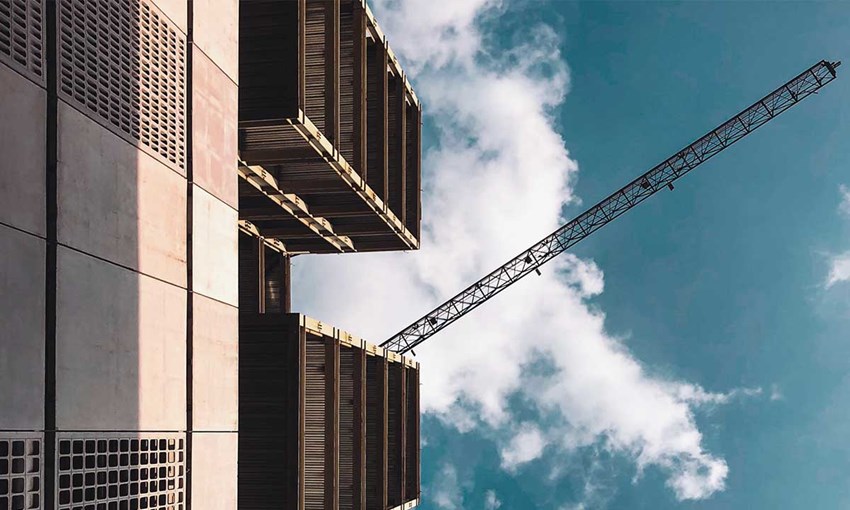Don't have 10 minutes? Here's the TL;DR (click to read more):
What COP aims to accomplish
Around 30,000 delegates consisting of world leaders, leading scientists, and climate activists gathered in Glasgow between 31st October to 12th November to discuss the progress and challenges they face in meeting the commitments they agreed to as part of the Paris Climate Agreement.
From switching to renewable energy, ending deforestation, and assisting reforestation to find ways to finance green technology, everything was on the cards at COP26.
Why COP needs a built environment day
Monumentally, an entire day at COP26 was dedicated to discussing how to accelerate the decarbonization of the built environment. But why? Apart from the sector's (rather large) contribution to the climate emergency, buildings are included in a majority of national climate action plans. Let's break it down:
Each party involved in the Paris Agreement is required to establish Nationally Determined Contributions (NDC) and update them every five years. Out of the 186 parties, 136 mention buildings, 53 include building energy efficiency, and 38 of them call out building energy codes.

There's no denying that joint efforts need to be made. The built environment’s great demand for natural resources accelerates climate change, and inefficient, unhealthy buildings negatively impact human health and well-being. It's a tough pill to swallow, but as discussed in Why sustainability is key to getting specified, we can't ignore it for much longer.
How the building industry contributes to the climate crisis
As the global population continues to grow at a rate of 1.1% per year, it’s estimated that 13,000 houses will need to be built every day throughout 2050 to meet demands. Getting roofs over peoples' heads sounds good, but the same can't be said about how we build:
- Buildings and construction are responsible for 39% of energy and process-related CO2 emissions and 36% of final energy consumption, reports the International Energy Agency (UN & IEA).
- The same source states that the manufacturing of building materials and products such as steel, cement, and glass make up 11% of emissions.
- A massive 28% of global energy-related carbon emissions from buildings stem from operational emissions (energy used to heat, cool, and light buildings).
The building industry's impact on climate change goes further than merely the initial construction of buildings; it’s reshaping how we live. But amid the gloomy data, we must acknowledge that we have a massive opportunity to change the CO2 trajectory.

But before we tap into one solution: let's get back to COP26.
Key deals and discussions at COP26
The first major deal at COP26 was to end and reverse forest loss and land degradation by 2030. Thousands of other details were mulled over at COP26, and we couldn’t possibly mention them all here. So, here's a summary of 5 key announcements you need to know about:
1. Race to Zero
1,049 cities and local governments have joined Race to Zero. This is a global campaign to rally support from leaders, businesses, cities, regions, and investors for a healthy and resilient zero-carbon recovery plan that knocks out future threats, creates decent jobs, and unlocks inclusive and sustainable growth. The hope is that more projects will start with net zero at their core instead of designs having to be reshaped at a later stage to meet a carbon zero initiative.
2. Clean Construction Action Coalition (CCAC)
Inaugurated at COP26, CCAC includes 11 companies from the architecture, engineering, and construction (AEC) industry and five cities from the C40 network: Budapest, Los Angeles, Oslo, Mexico City, and San Francisco. The coalition aims to bring together expertise and solutions from different areas of the construction value chain to help realize the C40’s pledge of halving emissions from the global built environment sector by 2030 to limit global warming to 1.5 degrees.
3. Phase down of coal power
There were high hopes that nations at COP26 would agree to the phase-out of coal power. The decision landed in a phasedown of unabated coal power and the phase-out of fossil fuel subsidies to reduce environmental harm.
The implication for the building and construction sector could be vast. Coal supplies over a third of global electricity generation, and it plays a crucial role in the manufacture of steel, cement, and glass. It’s imperative that sustainable and cost-efficient alternatives to coal power are engineered to prevent material shortages and cost increases.
4. Reduction of non-carbon dioxide greenhouse gas emissions
There was a call for nations to take further action to reduce the emission of greenhouse gases like methane by 2030. Methane was intentionally mentioned as it has 80 times the warming power of carbon dioxide.
However, methane energy is commonly used to power engines and turbines as it produces more energy by mass than any other fossil fuel. So, if nations are to fulfill their mission of reducing methane emissions, a cleaner energy source has to be in place to power the factories that manufacture building supplies such as glass and steel.
5. Digitalization, innovation, and digital twins
Sustainable development through digital innovation was a major topic at COP26: cities, regions, built environments, and digital twin technology was mentioned numerous times. A digital twin is a virtual model that’s been accurately designed to reflect a physical object and is considered a "big driver" for net-zero cities.

Can BIM enhance sustainable development?
What COP26 highlighted is that a greater emphasis on collaboration and the streamlining of processes are needed if we as a sector are to meet net-zero by 2050. While BIM (Building Information Modeling) isn’t the sole solution to sustainable cities and resilient societies, it's part of it. Apart from improving the general productivity in the building industry, BIM helps to:
1. Empower green design decisions
The implementation of sustainability in construction projects calls for a more detailed analysis. Thankfully, BIM makes it a whole lot easier to gain an overview and safeguard sustainable design decisions.
Every BIM project needs BIM objects. These information-rich digital replicas of products contain essential product data ranging from geometry to energy consumption and eco-labels – giving architects, engineers, and interior designers the intel to power green designs. Creating and supplying BIM objects removes information frustration and makes it easier for designers to include your products in their green projects. A win for manufacturers, specifiers, and the planet alike.
Want to make your products digitally available to a world of designers? Let's talk!
2. Mitigate overproduction and waste
Construction and demolition waste (CDW) account for more than a third of all waste generated in the EU, reports the European Commission. 600 million tons of construction and demolition waste was generated in the United States in 2018, which is more than double the amount of generated municipal solid waste. To top it off: overproduction of building materials, delays, and defects contribute to waste and the pressing issue of raw material shortages.
Circular waste management is (or should be) a given. But how can BIM reduce overproduction and waste? Well, it's all about preventing errors before (and during) construction. Building Information Modeling gives professionals the intel to detect clashes, calculate precise quantities of building materials, and improve on-site coordination.
3. Predicting maintenance will prolong a building's lifespan
Breaking sustainable ground isn’t limited to new builds or the design and building phases. Considering that 80% of the predicted building stock for 2050 already exists (McKinsey), we need to take operation, rehabilitation, and decommissioning into account. BIM is an important tool in the renovation and retrofit of existing buildings.
Quick access to information and better data storage means owners and facility managers gain insights into the building's operation and future maintenance needs. Major repairs and replacement programs can be planned to ensure that the building stands strong throughout many decades to come.

We’ve known for years, decades even, that human activity is having a devastating and long-lasting impact on the environment. While previous COP’s have seemed liked ‘all talk and little action’, COP26 had a more actionable vibe. Decisions made at the COP conference and in the future will impact the building and construction sector, but it shouldn’t be seen as obstructive. Instead, see it as an opportunity to reset and help us build greener housing, infrastructure, and cities that citizens demand.
Want to dive deeper into the green? Get your free copy of our e-book on why sustainability is key to getting specified.

Sarah Chase
Global Content Marketer










